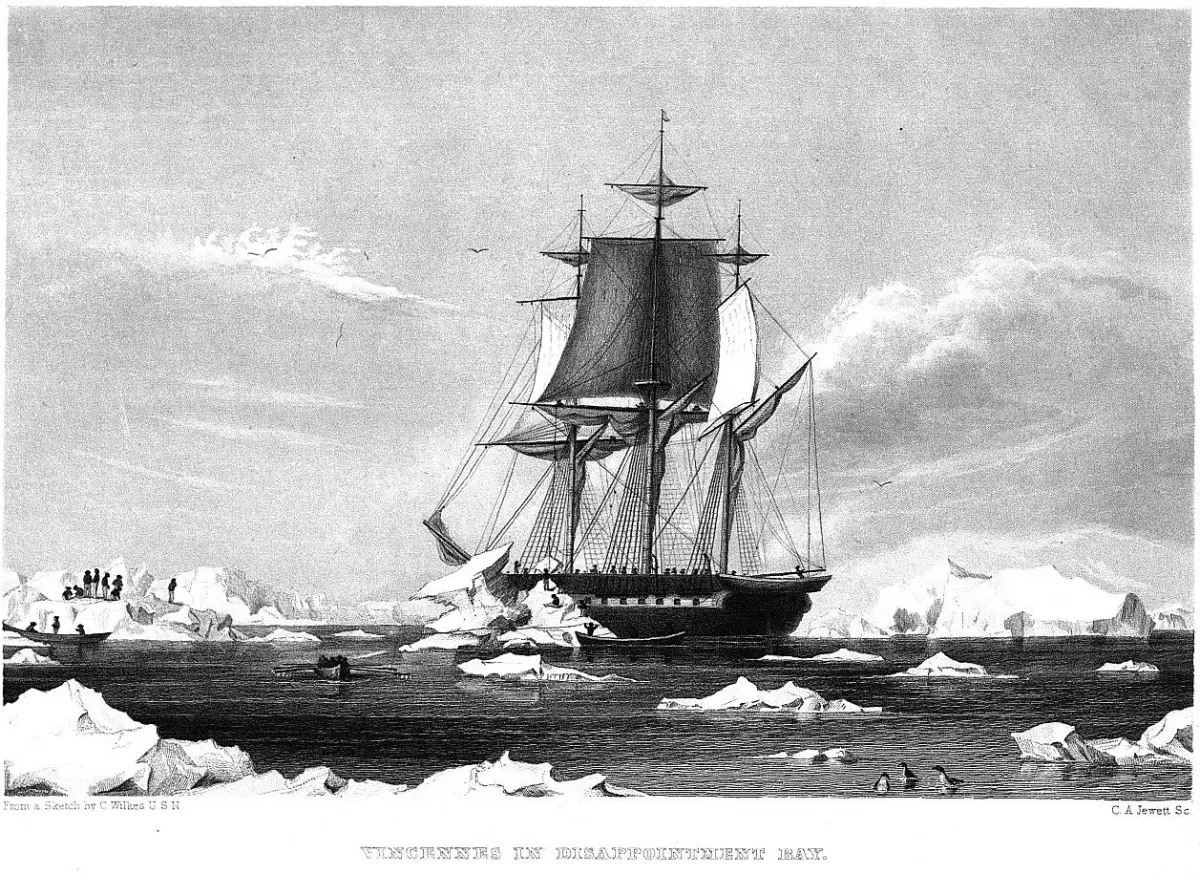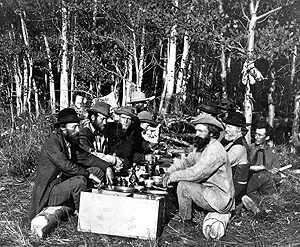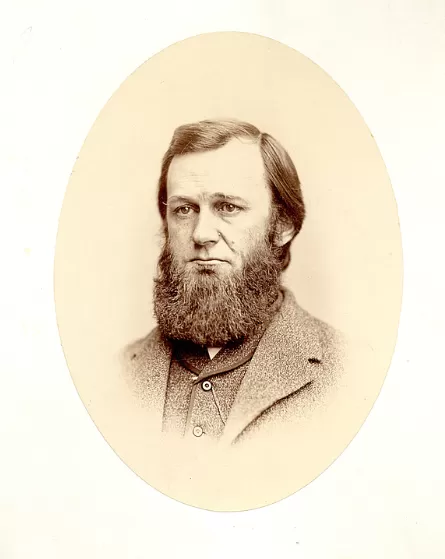
Search

Department of Botany
About
History of the U.S. Herbarium
The United States National Herbarium dates back almost to the foundation of the Smithsonian Institution in 1846. Collections of plants resulting from various early government expeditions were first deposited in the National Institute, named originally in 1840 as the National Institution for the Promotion of Science. Later these plants were turned over to the newly founded Smithsonian. Of particular interest among these were the large collections of the U.S. South Pacific Exploring Expedition, under the command of Lt. Charles Wilkes, U.S.N., which formed the real basis for a national herbarium.

The earliest expeditions sponsored in part by the Smithsonian itself included the explorations of Charles Wright in Texas and New Mexico in 1848. See descriptions of botanical expeditions that have contributed to the US Herbarium.
The early Smithsonian plant collections, together with those gathered during government-sponsored expeditions to the new West, were turned over to Asa Gray, a Regent of the Smithsonian Institution and Professor of Botany at Harvard University, and John Torrey, Professor of Botany at Columbia College. The assembled botanical collections were in the actual custody of Torrey and were kept at Columbia College in New York City.

The Smithsonian assisted with all the U.S. Government exploring expeditions, among others those of Emory, Whipple, King, Gunnison, Pole, Stevens, Hayden, and Powell. Especially noteworthy were the botanical collections of Charles Wright undertaken in conjunction with the U.S. North Pacific Exploring Expedition under the command of Ringgold and Rodgers which provided plant specimens from the Bering Straits, Japan, China, Hong Kong, and elsewhere.
In 1868, Torrey decided that he could no longer retain custody of the herbarium. In the absence of suitable quarters and staff in the Smithsonian building in Washington, D.C., the first Secretary, Joseph Henry, made arrangements that the Smithsonian collections be deposited with the U.S. Department of Agriculture, which had been amassing a working collection of herbarium specimens for the use of its personnel.
Some years later the noted paleobotanist Lester F. Ward began gathering another collection of plants in the U.S. National Museum for use in comparing living plants with fossil materials for the purpose of identification of the latter and also because of his interest in the local Washington area flora. It is of interest to note in this connection that in 1881 the Smithsonian Institution published Ward’s “Guide to the flora of Washington and vicinity.” Ward was given the title of Honorary Curator of Recent Plants at the Smithsonian Institution and later was named Honorary Associate in Paleobotany.

Spencer F. Baird, the second Secretary of the Smithsonian Institution, was concerned about maintaining two herbaria in Washington. Because of this and his personal desire to establish a great museum in the Capital, he made arrangements for returning to the Smithsonian the plant collections that had been turned over to the Department of Agriculture by Secretary Henry and also to bring along the assembled Agriculture specimens. Thus was formed the U.S. National Herbarium, a joint project of the U.S. National Museum, under the Smithsonian Institution, and the U.S. Department of Agriculture. Frederick Vernon Coville, Chief Botanist of the Department of Agriculture, was appointed Honorary Curator of the National Herbarium, March 28, 1893. He retained this post until his death in 1937. In 1894, Joseph Nelson Rose was made Assistant Curator of the National Herbarium and thus became the first, full-time, professional botanist associated with the Smithsonian Institution. At the time of the union which finally took place July 1, 1896, the National Herbarium contained an estimated 250,000 specimens.
For further reading, see “A History of the US National Herbarium” in the Plant Press, Vol 13, No. 2. http://nmnh.typepad.com/the_plant_press/2010/04/plant-press-2010-vol-13-issue-2-6.html